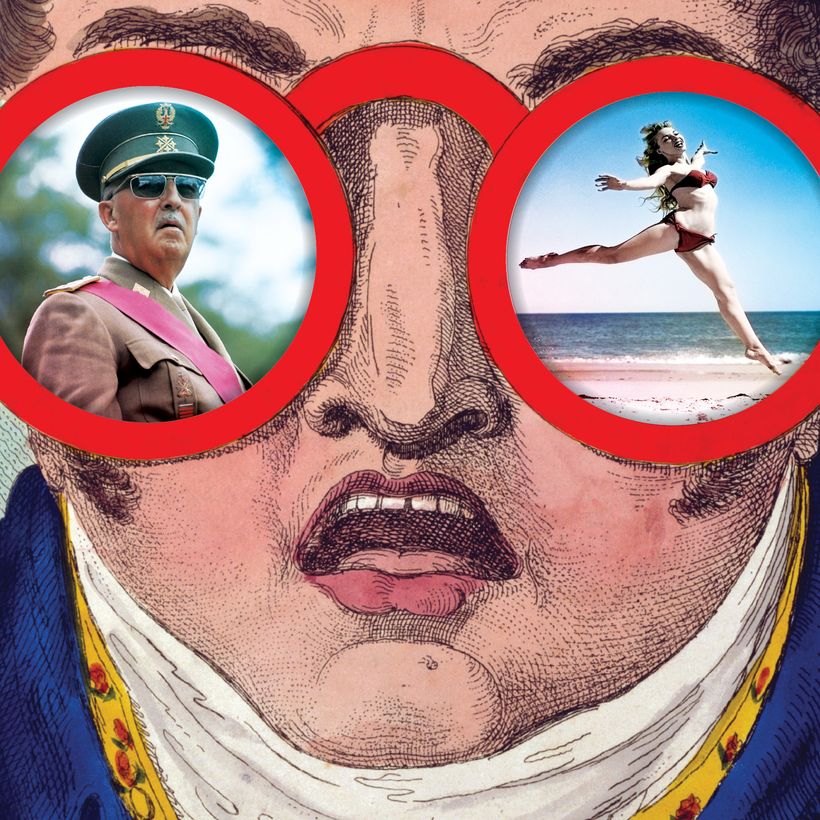Modernity comes in many forms. It might manifest itself as a technology, a fashion design, or new music. Change, both social and political, then radiates outward from that small innovation. In 1950s Spain, modernity arrived as two small pieces of colorful fabric worn at the beach. It’s fair to say that the bikini was instrumental in Spain’s modernization. It might even be argued that it destroyed Fascism.
Spain under Generalissimo Francisco Franco was a bastion of conservatism, a proudly backward nation. His prime minister, Admiral Luis Carrero Blanco, insisted that progress undermined stability. To offer change to a Spaniard, he argued, was like offering a drink to an alcoholic. Conservatism, however, was enormously costly; by actively impeding progress, Franco ensured that Spain remained a very poor country.
Enter Pedro Zaragoza Orts, mayor of the Spanish town of Benidorm from 1950 to 1967. When he was growing up, Benidorm was a little fishing village of around 3,000 residents. What made it special was its long sandy beach and dependable sunshine. For Zaragoza, that beach was a gold mine awaiting exploitation. He thought that tourism represented a much quicker path to prosperity than industrialization. He was right.
“Holidays used to be just for the rich,” Zaragoza recounted to The Independent in 2002. “I thought humbler … people deserved holidays, too.” That was certainly the feeling across Western Europe, when postwar prosperity opened up the possibility of regular trips to the Med. Package-tour companies began offering sun-starved northern Europeans cheap breaks in Italy, France, and Spain.
In Spain’s case, however, there was a huge obstacle in the way of the tourist boom—the bikini. (O.K., it was actually tiny, but its significance was huge.) Francoist Spain was a paragon of prudery where bikinis seemed the Devil’s work. When tourists began wearing them on the Costa del Sol, outrage exploded. Lurid stories of horny Swedish women preying on young Spanish waiters circulated widely. Ordinances banning bikinis were quickly passed. Police patrolled beaches ordering offenders to cover up. Those who refused were arrested.
Zaragoza realized that criminalizing the bikini would kill the nascent tourist industry; visitors would instead flock to Italy, where the authorities were more tolerant toward fashionable beachwear. In 1953, aged just 31, he challenged Spain’s status quo by unilaterally decreeing that bikinis could be worn on his beach. He also made it a crime to insult any woman clad in one.
The reaction was swift. The local bishop threatened to erect signs outside Benidorm proclaiming it “El Infierno” (hell). More significantly, the Archbishop of Valencia, Marcelino Olaechea, threatened Zaragoza with excommunication. This would have turned him into a pariah, stripping him of basic rights and effectively nullifying his marriage.
Zaragoza, it should be pointed out, was a devoted follower of Franco’s. He nevertheless believed that Fascism could not survive if Spain remained poor. In response to the threat of excommunication, he requested an audience with the generalissimo himself. When this was granted, he jumped on his Vespa and raced to Madrid, a journey of nine hours. (The Vespa makes this story perfect but also perhaps dubious—Zaragoza did like to embellish his already remarkable tales.)
During his audience with the generalissimo, Zaragoza supposedly noticed motorcycle grease on his trousers. Franco noticed it, too. Despite his embarrassment, the mayor calmly explained the importance of tourism to Spain and the importance of the bikini to tourism. Zaragoza later claimed that Franco was unfamiliar with the concept of the bikini and had to have it explained. However, the dictator did not fail to understand the benefits of a thriving tourist industry. Despite sharing the same moral misgivings as the archbishop, Franco threw his weight behind Zaragoza and told Olaechea to back off.

Thanks to the endorsement of the bikini, Benidorm was transformed from a small fishing village to a city which now has more than 300 high-rise tourist properties. It’s ugly but successful. The same effect was duplicated all along the Spanish coast, where resorts grew like weeds. Income from tourism increased from $125 million in 1959 to $3.1 billion in 1973, sparking an economic miracle. Spain’s growth rate soared to 7.1 percent, while national income rose by 156 percent. Neither Zaragoza nor Franco, however, understood that they’d created a monster.
The real problem on the beaches was not loose morals but loose change. A wealthy Spain proved difficult to control. Franco had assumed that prosperity would be seen as an acceptable substitute for liberalism, but he was wrong. Wealth rendered Spaniards more difficult to govern, not easier. They coveted the civil and personal liberties of the Dutch, Germans, and British, who came in droves to towns such as Benidorm. Beach money bought televisions, cars, and nice clothes, all of which was very liberating. In 1960, just 1 percent of Spaniards had access to a television. By 1970, 90 percent did.
When Zaragoza died, in 2008, two days of mourning were declared in Benidorm for the man who brought the bikini—and prosperity—to the region.
Franco died on November 20, 1975 (50 years ago next week). So, too, did his brand of Fascism. It had always depended on the Spanish people remaining impoverished and ill-informed. Neither was possible after the bikini.
Gerard DeGroot is Emeritus Professor of Modern History at the University of St. Andrews and the author of several books, including The Sixties Unplugged


